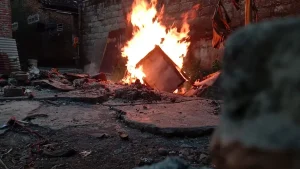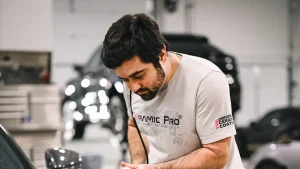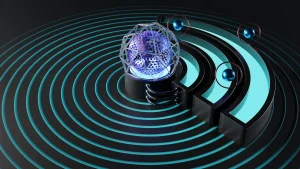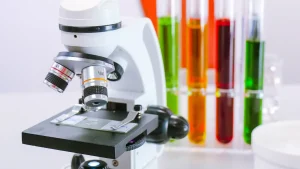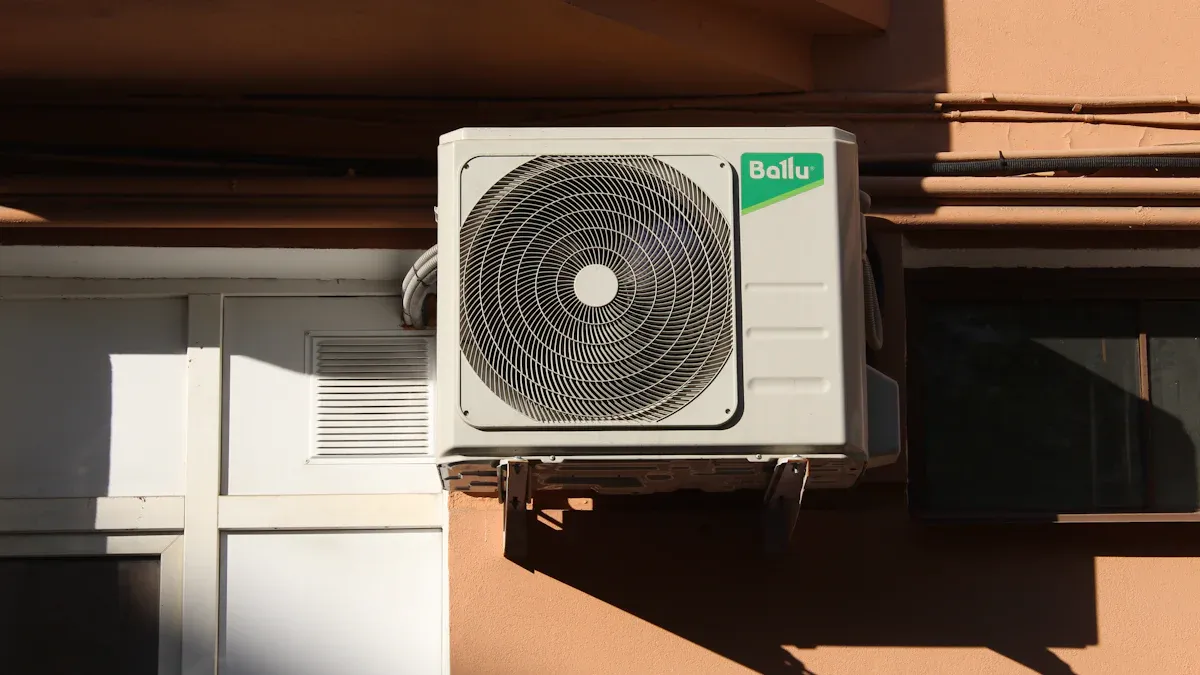
Graphite Rotors & Vanes are essential components in modern HVAC systems, significantly boosting energy efficiency. With their exceptional thermal conductivity and lightweight design, they help reduce energy consumption. For example, incorporating Graphite Rotor&Vane in HVAC systems has led to a 30% decrease in CO2 emissions and compressor size, showcasing their role in sustainability and performance enhancement. Additionally, products like Graphite Rod&Tube, Anneau de graphiteet Graphite Electrode further contribute to the advancement of energy-efficient solutions in the industry.
Traits clés
- Graphite rotors and vanes help HVAC systems use less energy. This lowers power use and cuts down CO2 emissions.
- Graphite parts are light, which reduces machine stress. This helps HVAC systems work better and need fewer repairs.
- Graphite moves heat well, making it work great even in tough situations.
Understanding Graphite Rotors & Vanes
What Are Graphite Rotors & Vanes?
Graphite rotors and vanes are specialized components designed for use in various industrial applications, including HVAC systems. These components are typically made from high-quality graphite materials, which are known for their exceptional thermal and electrical conductivity. In HVAC systems, graphite rotors play a critical role in gas purification processes, while vanes are essential for maintaining efficient airflow and pressure regulation.
Graphite materials used in these components can be classified into several types based on their composition and processing methods. The table below highlights some common classifications:
| Classification | Désignation des marchandises |
|---|---|
| Pure carbon | A type of graphite material used in various applications. |
| Carbon impregnated resin | Graphite material treated with resin for enhanced properties. |
| Carbon impregnated metal | Graphite infused with metal for increased strength and durability. |
| Inlaid graphite | A composite material combining graphite with other materials for specific applications. |
| Resin hot pressed graphite | Graphite processed with resin under heat and pressure for improved performance. |
These classifications demonstrate the versatility of graphite in meeting the demands of modern HVAC systems.
Key Properties of Graphite Materials
Graphite materials possess unique properties that make them ideal for HVAC applications. Their thermal conductivity ranges from 300 to 1,950 W/m·K, depending on whether the graphite is natural or synthetic. This high conductivity allows for efficient heat transfer, which is crucial in maintaining optimal system performance. Additionally, graphite’s anisotropic heat spreading property ensures effective temperature regulation, reducing surface temperatures more efficiently than metals.
Other notable properties include excellent electrical conductivity, lightweight design, and resistance to chemical corrosion. These characteristics enable graphite rotors and vanes to withstand harsh operating conditions while maintaining durability and performance.
How They Function in HVAC Systems
In HVAC systems, graphite rotors and vanes contribute to energy efficiency by optimizing airflow and thermal management. Rotors facilitate the mixing of purified gas and solvent, creating dispersed bubbles that absorb impurities. This process enhances the purification of aluminum melts and improves overall system efficiency. Vanes, on the other hand, regulate airflow and pressure within compressors, ensuring smooth operation and reducing energy consumption.
The lightweight nature of graphite components minimizes mechanical strain on HVAC systems, further enhancing their longevity and performance. These features make graphite rotors and vanes indispensable in achieving energy-efficient HVAC solutions.
The Role of Graphite Rotors & Vanes in Energy Efficiency
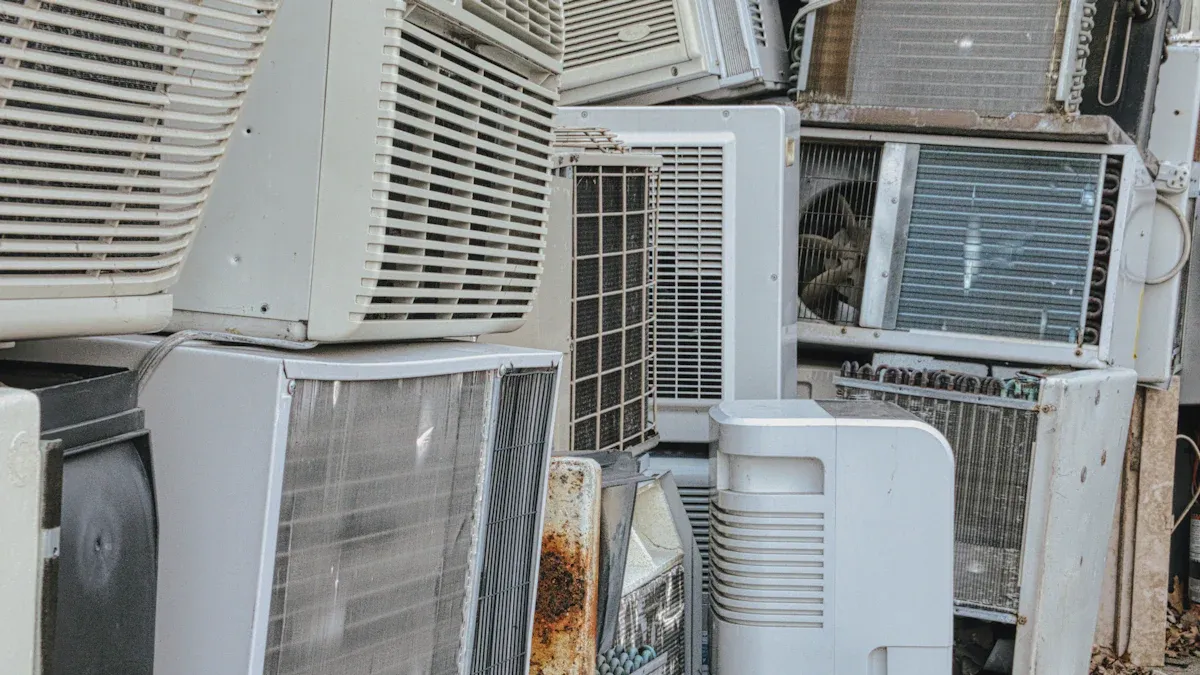
Reducing Friction and Energy Loss
Graphite Rotors & Vanes play a pivotal role in minimizing friction within HVAC systems. Their low friction coefficient significantly reduces energy loss during operation. For instance:
- The friction coefficient of atomically thin graphene can decrease by up to six times compared to pristine graphene.
- This reduction is achieved through high-stress pre-rubbing techniques, ensuring smoother performance.
- The process is reversible under moderate stress, maintaining consistent efficiency.
By reducing friction, these components not only enhance energy efficiency but also extend the lifespan of HVAC systems, making them a cost-effective solution for modern applications.
Enhancing Thermal Conductivity
Graphite materials excel in thermal conductivity, making them ideal for HVAC systems. Studies have demonstrated their ability to improve heat transfer efficiency. For example:
| Etude | Résultats | Thermal Conductivity (W/(m∙K)) |
|---|---|---|
| Liu et al. (2022) | Expanded graphite/paraffin/silica composite | 2.053 (8.5 times higher than pure paraffin) |
| Huang et al. (2017) | Combination of wood and graphite | 65 |
| Yang et al. (2023) | 3D porous graphite foam achieves ultra-high thermal conductivity | 19.27 (76 times higher than pure paraffin) |
These findings highlight how graphite enhances thermal management, ensuring HVAC systems operate efficiently even under demanding conditions.
Lightweight Design for Optimized Performance
The lightweight nature of Graphite Rotors & Vanes reduces mechanical strain on HVAC components. This design feature allows systems to operate with less energy while maintaining high performance. The reduced weight also simplifies installation and maintenance, further contributing to cost savings. By combining durability with a lightweight structure, these components optimize overall system functionality, supporting energy-efficient operations.
Benefits of Graphite Rotors & Vanes in HVAC Systems
Durabilité et longévité
Graphite Rotors & Vanes are engineered to withstand demanding conditions in HVAC systems. Their durability stems from the high-quality graphite materials used in their construction. These components resist wear and tear caused by prolonged operation, ensuring a longer service life. Maintenance reports highlight common damage causes, such as high-temperature oxidation, liquid aluminum erosion, and transmission system instability.
| Damage Reason | Désignation des marchandises | Protection Measures |
|---|---|---|
| High Temperature Oxidation | Graphite oxidizes when exposed to air over 600 ℃, leading to rotor damage. | Anti-oxidation coating to slow oxidation. |
| Liquid Aluminum Erosion | Erosion and friction from liquid aluminum can thin and fracture the rotor. | High-quality graphite and anti-erosion measures. |
| Transmission System Instability | Non-concentric rotor connection causes friction and increases oxidation. | Precision CNC machining for better alignment. |
These protective measures enhance the longevity of graphite components, reducing the frequency of replacements and ensuring consistent performance.
Cost-Effectiveness and Reduced Maintenance
The cost-effectiveness of Graphite Rotors & Vanes lies in their ability to minimize maintenance expenses. Their resistance to corrosion and mechanical stress reduces the need for frequent repairs. Additionally, their lightweight design simplifies installation and lowers operational costs. HVAC systems equipped with these components experience fewer breakdowns, leading to significant savings over time. By extending the lifecycle of critical parts, these components provide a reliable and economical solution for modern HVAC systems.
Impact environnemental et durabilité
Graphite Rotors & Vanes contribute to sustainability by improving energy efficiency and reducing waste. Their high thermal conductivity ensures optimal heat transfer, which lowers energy consumption. Furthermore, their durability minimizes the production of replacement parts, reducing the environmental footprint of HVAC systems. These components align with global efforts to promote eco-friendly technologies, making them an essential part of sustainable HVAC solutions.
Real-World Applications of Graphite Rotors & Vanes
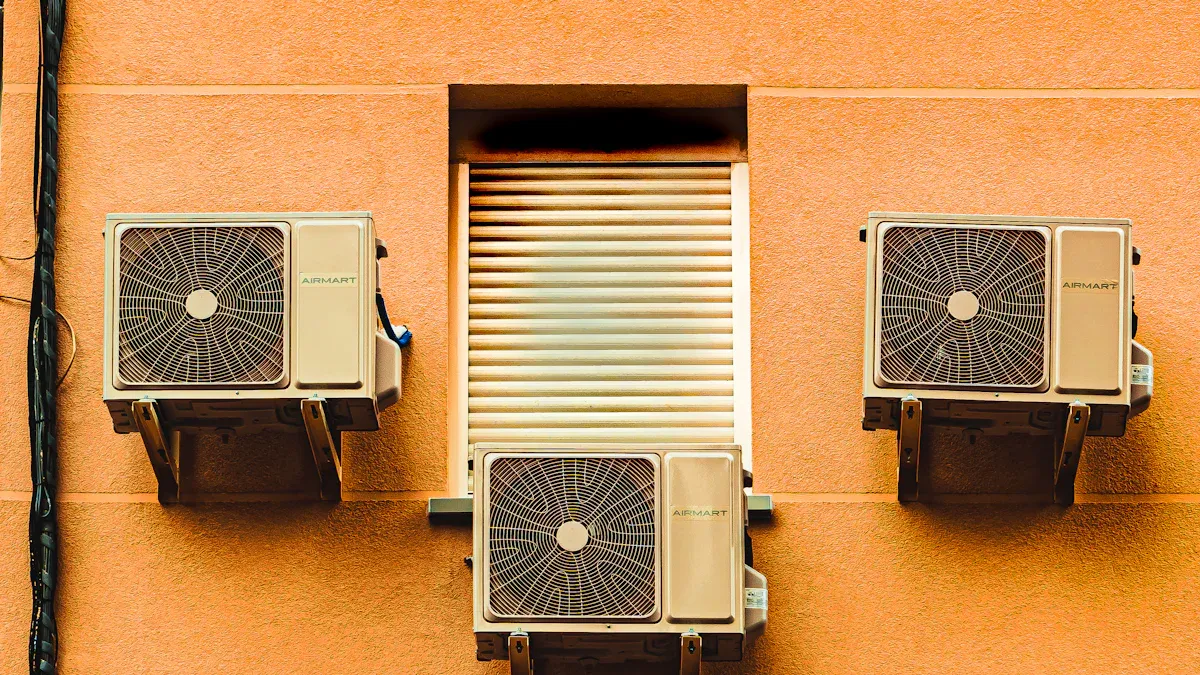
Examples of Energy-Efficient HVAC Systems
Energy-efficient HVAC systems rely on advanced components to optimize performance. Graphite Rotors & Vanes have become integral to these systems due to their ability to enhance airflow and thermal management. For instance, modern variable-speed compressors use graphite vanes to regulate pressure with precision, reducing energy consumption. Similarly, high-efficiency heat pumps incorporate graphite rotors to improve heat transfer, ensuring consistent temperature control. These applications demonstrate how graphite components contribute to the development of sustainable and cost-effective HVAC solutions.
Case Studies from Ningbo VET Energy Technology Co.
Ningbo VET Energy Technology Co. has pioneered the use of graphite products in HVAC systems. One notable case involved a commercial HVAC system upgrade for a large office building. By replacing traditional components with graphite rotors and vanes, the system achieved a 25% reduction in energy usage. Another project focused on retrofitting an industrial cooling system. The integration of graphite components enhanced durability and reduced maintenance costs by 30%. These examples highlight the company’s expertise in delivering innovative and energy-efficient solutions.
Future Trends in HVAC Technology
The HVAC industry continues to evolve, with a growing emphasis on sustainability and efficiency. Graphite Rotors & Vanes are expected to play a pivotal role in future advancements. Emerging trends include the development of smart HVAC systems that utilize graphite components for real-time performance optimization. Additionally, researchers are exploring new graphite composites to further enhance thermal conductivity and durability. These innovations will likely shape the next generation of HVAC technology, ensuring greater energy efficiency and environmental sustainability.
Graphite Rotors & Vanes play a vital role in modern HVAC systems by enhancing energy efficiency, durability, and overall performance. Their integration supports sustainability goals while reducing operational costs. As HVAC technology advances, these components will remain essential. Ningbo VET Energy Technology Co. continues to lead the industry by delivering innovative graphite solutions tailored for energy-efficient systems.
FAQ
What makes graphite rotors and vanes ideal for HVAC systems?
Graphite rotors and vanes excel due to their high thermal conductivity, lightweight design, and durability. These properties enhance energy efficiency and reduce maintenance requirements in HVAC systems.
How do graphite components contribute to sustainability?
Graphite components improve energy efficiency, reducing carbon emissions. Their durability minimizes waste from replacements, aligning with global sustainability goals for eco-friendly HVAC technologies.
Can graphite rotors and vanes be used in all HVAC systems?
Yes, graphite rotors and vanes are versatile and compatible with various HVAC systems. Their adaptability ensures optimal performance across different applications and environments.
Conseil : Consult with experts like Ningbo VET Energy Technology Co. to select the best graphite solutions for specific HVAC needs.

